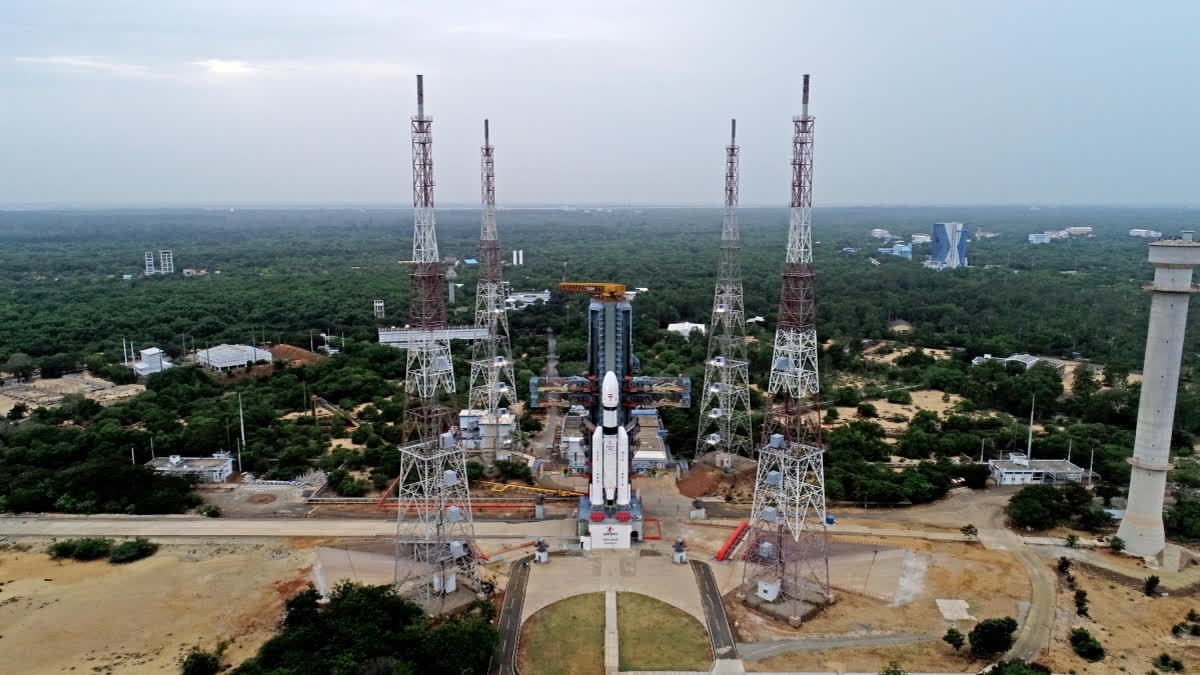Hyderabad: India's third lunar exploration mission, Chandrayaan-3, is ready to take off in the fourth operational mission (M4) of the LVM3 launcher. By demonstrating a soft landing on the lunar surface by its lunar module and demonstrating roving on the lunar terrain, the Indian Space Research Organisation will be crossing a few frontiers. The mission is supposed to be supportive of ISRO’s future interplanetary missions.
Additionally, the deployment of the rover and in-situ scientific experiments will scale new heights in lunar expeditions. ISRO plans to bring the Moon closer to us through its pathbreaking experiments. The mission will be carried out in 10 phases; 1. The Earth Centric Phase will be 'Phase 1'; 2. The Lunar Transfer Phase will be 'Phase 2'; 3. The Moon Centric Phase will consist of phases 3-10.
1. Earth Centric Phase (Phase-1):
- Pre-launch Phase
- Launch and Ascent Phase
- Earth-bound Manoeuvre Phase
2. Lunar Transfer Phase (Phase-2):
- Transfer Trajectory Phase
3. Moon Centric Phase:
- Lunar Orbit Insertion Phase (LOI)-(Phase-3)
- Moon-bound Manoeuvre Phase (Phase-4)
- PM and Lunar Module Separation (Phase-5)
- De-boost Phase (Phase-6)
- Pre-landing Phase (Phase-7)
- Landing Phase (Phase-8)
- Normal Phase for Lander and Rover (Phase-9)
- Moon Centric Normal Orbit Phase (100 km circular orbit) - For Propulsion Module (Phase-10)
The Chandrayaan-3 consists of an indigenous propulsion module, a lander module, and a rover to develop and demonstrate new technologies required for interplanetary missions. The propulsion module will carry the lander and rover from injection orbit to 100 km lunar orbit. It also carries a Spectro-polarimetry of Habitable Planetary Earth (SHAPE) payload to study Earth's spectral and polarimetric measurements from the lunar orbit. The main function of the Propulsion Module is to carry the LM from the launch vehicle injection orbit to till Lander separation.
LVM3 is the operational heavy-lift launch vehicle of ISRO and has a spectacular pedigree of completing 6 consecutive successful missions. This is the 4th operational flight of LVM3, which aims to launch the Chandrayaan-3 spacecraft to Geo Transfer Orbit (GTO). LVM3 has proved its versatility to undertake most complex missions like:
- Injecting multi-satellites.
- Mission planning to ensure safe relative distance among separated satellites through re-orientation and velocity addition maneuvers.
- Multi orbit (LEO, MEO, GEO) and execute interplanetary missions.
- India’s largest and heaviest launch vehicle ferrying Indian and international customer satellites.
LVM3-M4 will be launched from the Second Launch Pad (SLP) of Satish Dhawan Space Centre (SDSC) at Shriharikota(SHAR). The payload mass of LVM3-M4 is 3895 kg, and it stands at a height of 43.5 m. The Chandrayaan-3 has concluded its 'Launch Rehearsal' which simulates the entire launch preparation and process lasting for 24 hours and is scheduled for a launch on July 14 at 2:35 PM IST.
Also read; 'Chandrayaan-3' Mumbai connection: Godrej develops critical components



